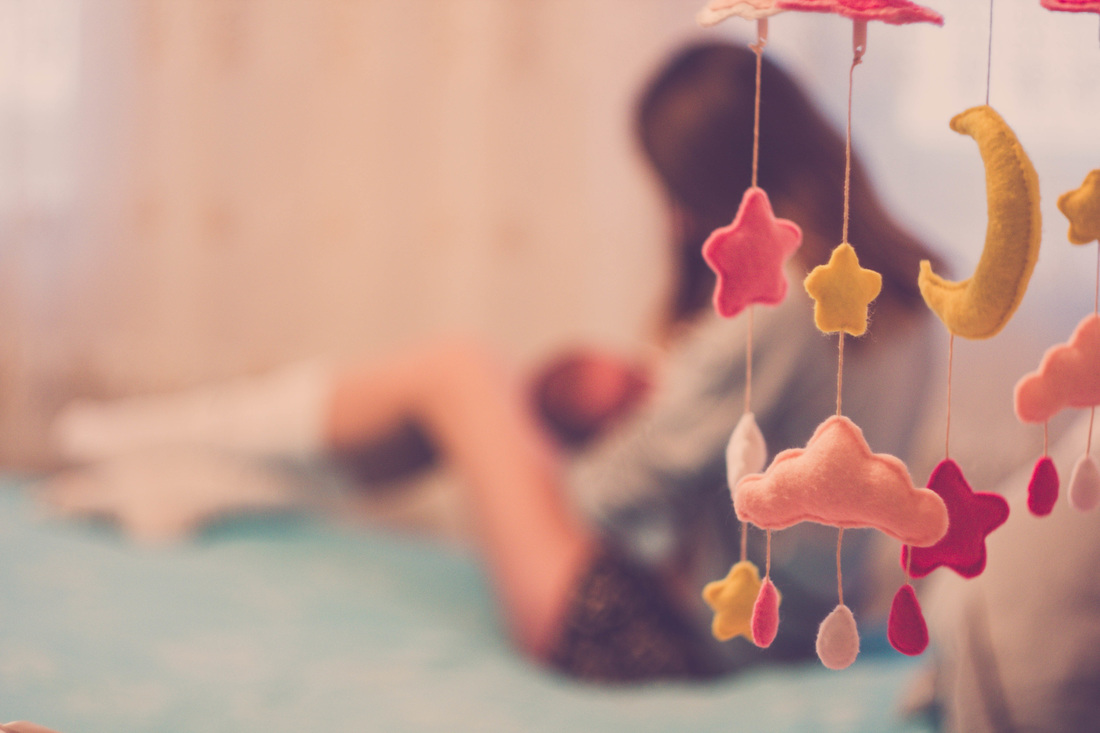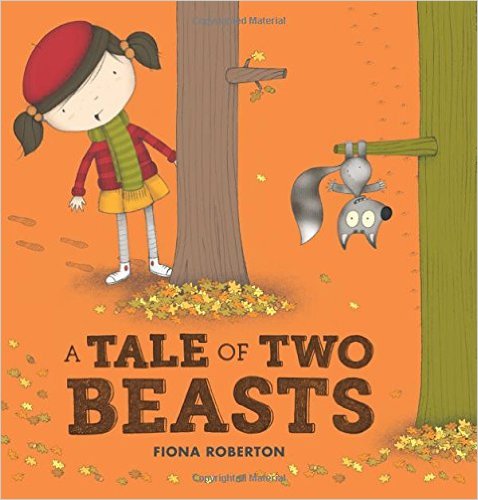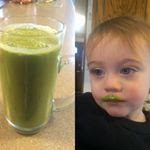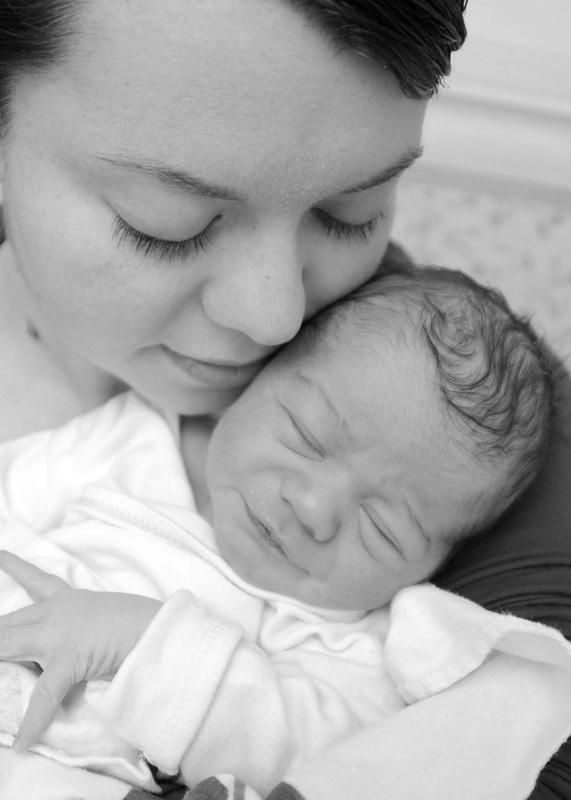|
I’m not so far removed from reality to think that I am a perfect parent. I know that I am not, but I try my hardest to parent in a loving way that fosters a creative, safe, and warm environment. One of the most powerful tools to make or break a peaceful home is words. Oh, the power of words. I know that the words “don’t cry” can be emotionally damaging to children. Yet, one night, as my patience became totally depleted, I found myself uttering these words without much empathy. My preschooler was upset about something I deemed trivial. “Don’t cry” flew out of my mouth. “Big boys cry too!” He wisely spoke through his tears. Yes, my boy. Boys do cry, and they should. (Please note: I really do mean crying… not whining. Nobody wants a whiner in their house.) Once again, we can turn to science to shed light on an often-feminized topic; crying, as it turns out, is more than just a manipulative tool to get our way. The Health Benefits of CryingEmotional crying (as opposed to tears from the wind or from cutting onions) provides a healthy way for the body to process intense stress and/or emotions. Researchers have discovered that the chemical makeup of these tears are different from non-emotional tears. Emotional tears actually contain: ⦁ Stress hormones (one of which is cortisol) ⦁ Prolactin ⦁ Natural painkiller (leucine encephalin) ⦁ Manganese, which is a natural mood regulator This chemical makeup of real tears is exactly why you feel better after a good cry. As the stress hormone leaves the body, the mental attitude frequently improves, and the crier feels relieved. When we tell boys not to cry, we are cutting off a healthy way for them to process emotions. As the stress hormones build up without release, it sets the stage for rage, anger, and depression. Telling boys not to cry furthers the gender stereotypes Man up. Don’t cry like a girl. Don’t be a sissy. Only girls cry. Only babies cry. The research behind the chemical makeup of tears points out that emotional tears carry stress hormones out of the body – whether that body is male or female. That means that crying is not inherently a trait of femaleness; crying is within human nature. When we tell boys not to cry, it does two things: ⦁ It forces boys into a stereotype that forces a separation of all emotion from manhood. ⦁ It makes any girl who cries inferior. But crying isn’t just for girls. It’s for humans; it’s a safety valve to help us process emotions before we reach the critical point. Teach your sons to cry; teach them to process their emotions. Heck, just teach them about emotions. Teach your daughters empathy, to console a crying boy, to never mock a boy (or man) who cries. Crying Helps the Healing ProcessCertified relationship coach Chris Armstrong stresses the importance of crying as part of the healing process. According to Armstrong: “Crying is an outlet that has less casualties than isolation, anger or passive aggression. Crying is an instant release mechanism that allows the healing process to begin quicker. When men want to cry but don’t, they are simply trading in that outlet for something else. As a result, moving on from whatever wrought the emotion becomes that much harder.” Crying Helps Prevent Mental DisordersThis benefit of crying may seem a bit alarmist at first read; however, Harvard professor William Pollack presented his research at a conference on youth violence prevention hosed by the New York Academy of Sciences. Pollack presented his case that the anger and disconnect of young boys is at the heart of the increasing diagnoses of ADHD and depression.
The idea that boys should be “tough” and independent (too early) often causes an emotional clog, which can lead to depression, anger, and rage. The solution? Teach your boys how to handle emotions and how to cry. Boys don’t need to “toughen up.” They don’t need to stuff their emotions under a rug. To those fearful of perpetuating the tea cup generation: Experiencing emotions does not create the tea cup generation. Experiencing emotions is a part of what sets humans apart from the rest of the animal kingdom. When we embrace our emotions and learn to regulate them, life has a new sweetness to it. So the next time, your little boy cries, fight the urge to say “Don’t cry.”
0 Comments
If you read my previous post, then you already know that regular family dinners contribute to a family's overall happiness, physical health, and emotional health. But if you have small children, you probably are thinking "How can dinnertime be happy with a picky eater in the picture?" Picky eating is normal!Childhood picky eating is very normal! A study entitled "Food Rejections in Children: Cognitive and Social/Environmalen Factors Involved in Food Neophobia and Picky/Fussy Eating Behavior" illustrated justh ow common it is: nearly 39% of children aged 2-6 are picky or fussy eaters. The behavior usually starts around toddlerhood and begins to taper off by age 6. Even though this is a silver lining, 4+ years of picky eating can be draining. 7 Tips for handling picky eatingSince food is obviously necessary for ... um... living, it makes sense that a food battle would ensure. As a parent, it is your responsibility to make sure your child is well-nourished, but picky-eating definitely puts a wrench in that plan. Follow this tips for handling fussy eating with peace and respect:
Avoid yelling or forcing a child to finish his plate Because much of fussy eating stems from panic and fear (picky eating is sometimes referred to as "Food Neophobia" in the science world), yelling or forcing a child to sit until the plate is clean only increases feelings of panic and fear. The more panic a child feels, the more negative feelings s/he will associate with dinnertime. Include the nutrients where you can My son definitely falls under the picky-eater category. My main goal is make sure he gets the proper nutrients. He loves fruits, vegetables, and grains. He does not like any form of meat so protein is where I struggle. I rely a lot of eggs and peanut butter. I make shakes for him occasionally to make sure he has enough protein. The simplest recipe I use is this:
Stick to what works My son definitely can get into a rut with food, but as long as he is getting enough nutrients, I don't mind at all. Sticking to what I know he loves makes meals less of a battle. I know one day he'll be more adventurous, but for now, I'm just focusing on what he does enjoy. Rewards Rewards can be a very slippery slope. If you reward a child for doing X behavior, it can (but not always) escalate to the point where s/he won't do anything without a reward. However, for short-term use, rewards can be very effective. If you are thinking of using rewards for eating, be sure to never use food as a reward. Consider a sticker chart for just trying. Repeated Exposure Even though it gets tiring, always ask your child if they want to try a bite of X food. You will probably get a lot of "No thank you's" (I know I do!) but the key is to continue to expose your child to the new food. Eventually s/he will try it. Child experience food through social learning, which means that the more they see it, the more familiar it becomes, and the more likely it will be accepted. I love to add berries or bananas to my cereal and oatmeal but for years that has been a big fat No for my son. Instead of putting berries in his cereal, I slice them on a ramekin and let him eat them separate. One morning, much to my surprise, he dumped his berries in the cereal and happily ate it all. That may seem like small potatoes but for this Mama, that was a huge WIN! I was so proud of him; he did it all on his own without a battle. Now he loves his berries in his cereal, and he came to that conclusion all on his own. Presentation Presentation for new foods is key for my son. The way I present it both verbally and physically plays a big part in whether or not he'll try it. I bought him fun plates and silverware that look like construction vehicles to help make meals more fun. The way I describe food also helps. We call broccoli "baby trees". He loves broccoli but the very first time I introduced it, he was wary. A simple name change was all he needed to give it a try. No pressure The key to keeping the peace at the table is to remain pressure-free. Ask your child to try a food, but don't hound him. Remember that research shows that a child may need 10-15 tries of a food before he actually eats a serving. Dealing with a picky eater can be tiring and exhausting and can be a major source of dinnertime drama. Following these tips can definitely help bring more peace to your table. What have you done to help a picky eater in your family? Comment below! The way we talk to our children becomes their inner voice. What is peaceful parenting?
Peaceful parenting consists of philosophies and theories in which parents use love and the parental-child bond to guide children on the right path in life. Studies continually report that children are more receptive to parental guidance when parents instruct (rather than punish) and empathize with them. These children are capable of internalizing self discipline and as a result are happy children. Why peaceful parenting? Peaceful parenting works. We've all heard the saying "If Mama ain't happy, ain't nobody happy" and there is a truth to that. I know firsthand that when I wake up on the wrong side of the bed, I bring a gloomy cloud that looms over us all. When I overreact to small messes, I know I cause my children to spiral into emotional messes. They are little and rely on me to teach them proper emotional responses. How can I teach them if I myself cannot control emotions? I also know that when I am cheerful and chipper (or at least force a smile when I'm over it all) that I can spread that joy to my kids. I have the power to be their calm. When they see me react with patience in a calm manner, they are able to hold onto peace. If I am the barometer and set the mood of the day, then following peaceful parenting practices helps me create a peaceful home enviornment. A peaceful home allows children to thrive and be happy. Peaceful parenting does not at all mean permissive parenting. Permissisve parenting results in unhappy children who constantly tests the already-lax limits of their parents. Children are hardwired to enjoy limits; it helps them feel secure. On the other hand, strict parenting frequently results in children who are angry because they cannot ever please their parents. These children grow to resent all parental guidance and as a result, they do not (and cannot) internalize self discipline. What does it mean to be a peaceful parent? At the heart of peaceful parenting is the desire to teach our children and bond with them, guided by love.
It's not easy to wake up one day and decide to do away with harsh punishments and timeouts. Peaceful parenting requires work, a daily reaffirmation of your committment. There will be times when you are tested. You will want to yell at your kids and stick them in a time out. But stick with peaceful parenting and you will see that not only will your children become happier, but you will as well.
Ahh, summer! A time for sunscreen, barbecues, pool trips, and toes in the sand. And books. Don't forget the books. What's summer without a reading list?
Here's my list (so far): 1. Dear Mr. Knightley by Katherine Reay Why am I reading this: I like unusual books, and this one is written as a series of letters from an aspiring writer who has a serious book obsession. 2. ToddlerCalm: A Guide for Calmer Toddlers & Happier Parents by Sarah Ockwell-Smith Why am I reading this? Because of this line right here: "It may be hard to parent a toddler, but it is so much harder to be a toddler." Part of the journey of life requires us to walk in other people's shoes (i.e. empathy) but we often forget to walk in the littlest shoes. I'm on a mission to make sure I'm doing the best job I can as a mama, and to me, that means always working on being better. "Better" is not an endpoint, but a continual journey as I learn to love and raise my kids better and better each day. 3. The Silkworm by Robert Galbraith Why am I reading this? Well, I haven't opened this one yet. It's in my kindle so I know it's coming soon, and I cannot wait. I read The Cuckoo's Calling, the first of the Cormoran Strike series, and was mesmerized. The Silkworm is the next in this series. 4.The Paris Wife by Paula McClain - Again, this book is loaded in my kindle but not yet started. This book is about the love between Ernest Hemingway and his wife, Hadley. It won the GoodChoice awards for historical fiction, and I just so happen to love historical fiction so I am excited to read this. UPDATE: Finished this and was not disappointed. If you love historical fiction, go for it! I just know this list will triple in length by the end of the summer! Need new books? Try Amazon Kindle Unlimited for free for one month!
"When a little girl rescues a strange beast from the woods, she takes him home. But for some reason, the little beast is not happy! There are two sides to every story, and this funny and charming tale is no exception. Author/illustrator Fiona Roberton offers both points of view in this discussion-starting tale of the importance of seeing the world in different ways." A Tale of Two Beasts This week's book review showcases an illustrated children's book A Tale of Two Beasts by Fiona Roberton. Although I bought this book for my three year old for Christmas, it quickly became one of my favorites. I read it to my sister and she too was quick to state that she wants her own copy. What sort of children's book captivates two grown women? One that teaches a lesson that all of humanity could benefit from - the same lesson we've heard over and over since childhood: Don't judge someone until you walk a mile in their shoes. Every story has two sides, and you never know what the other person is going through. Often, it is much easier to learn a lesson when we can see what the lesson looks like. What does it look like to not judge someone until you walk in their shoes? What does it look like to try and see someone else's perspective? That's the great thing about stories. Stories use examples to teach us lessons; it's why stories are such great tools for learning. Roberton's book does not disappoint. In an unique story telling method, she does more than tell a story; she shows the story. She shows exactly what it looks like to see the two sides of a story. We see a little girl who mercifully rescues a sad little wolfie from the woods, but then we see the (not sad) beast who was ruthlessly kidnapped and whisked away from his beloved woodsy home. Two sides: one story. It's a lesson we all could implement just a little bit more in our lives. Being aware of someone else's journey helps us use a little more mercy and a little more kindness in our interactions. What's in your book queue? Let us know what you're reading to your kids! This site contains affiliate links to products. We may receive a commission for purchases made through these links at no additional cost to you. We only suggest products we love and use.
Last night when I got home, my sweet boy ran up to the door and said "Mama, I was hungry so I made a snack, and I wanted to play so I got out the playdough all by myself." He was SO proud of himself. Even though his "snack" was 6 brownies and his activity of choice invloved playdough bits everywhere, I was so proud of how independent and smart he is. The look on his face was priceless. I could've chosen to be mad about the fact he ate his weight in brownies and made a huge mess, but I used the moment to let him know how proud I am of how big he's getting and how sweet and smart and kind he is. A few weeks ago, I stumbled across a poem called "Dust If You Must" by Rose Milligan, which was published in 1998 in UK's magazine The Lady. Most of us mamas have heard the sweeter poem about how "dusting can wait because I'm putting my baby to sleep." However, Milligan's poem is much darker. But it struck me. Shook me, even. Milligan's simple little poem has been creeping into my mothering. It's not just about mothering however. It's about life. What do we do with each moment? Do we take it for granted? No matter how big or how small each moment might seem, let us encounter each moment with the spirit of a child. Live. Really live in each moment. Dust if you must, but wouldn’t it be better
To paint a picture or write a letter, Bake a cake or plant a seed, Ponder the difference between want and need? Dust if you must, but there's not much time, With rivers to swim and mountains to climb, Music to hear, and books to read, Friends to cherish and life to lead. Dust if you must, but the world’s out there, With the sun in your eyes, the wind in your hair, A flutter of snow, a shower of rain. This day will not come round again. Dust if you must, but bear in mind, Old age will come and it’s not kind. And when you go - and go you must - You, yourself, will make more dust. -Rose Milligan
|
About KatieWife & Mama with a passion for peaceful parenting, natural living, homeschooling... and my daily café au lait. Archives
July 2020
Categories
All
|







